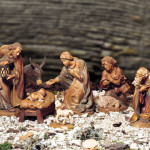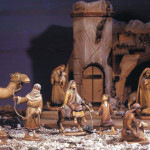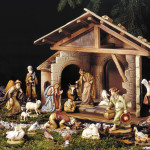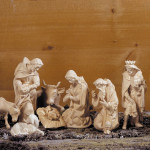The crèche plays an important role in the Christmas traditions.
Little is known about the early development of the crèche. Speculation remains on the actual date of origin. The first reference to the crèche, “Lord in the crib”, was made by St. John Crysostomos (345 A.D. – 407 A.D.). In later references, Dutch Augustine monk Johannes Mauburnus suggests a daily visit during the Christmas season to the “child in the crib” with the Holy Virgin and Holy Joseph. It is known that the first crèches were called “Bethlehems”.
The first written evidence of a wood carved “presepe” (crèche) was in 1478, when a merchant from Naples commissioned the set. By the early 1500’s, crèche figures took form in every material imaginable, including wood, stone and cloth. They were both movable and unmovable, and hand painted or dressed in fabric.
- Anri – Prof. Karl Kuolt nativity
- Anri – Juan Ferrandiz nativity
- Anri – Original Karl Kuolt nativity – plain wood
- Anri – Original Florentiner nativity
- Anri – Walter Bacher colored Linden wood
- Anri – Holy Land nativity
- Anri – Ulrich Bernardi nativity
- Anri – Walter Bacher plain Linden wood
In time, various European regions developed distinctive crèche styles. The mountainous Tyrol takes a prominent position in the crèche tradition, with the Gröden valley, the home of ANRI, known as the centre for producing hand carved crèche figures. It was there that the Bethlehem scene first reflected a native landscape, including snow-covered stables and huts.
The crèche is profoundly a symbol of Christianity. It has been the theme for works of well-known artist who have created the wonderful models for ANRI.









